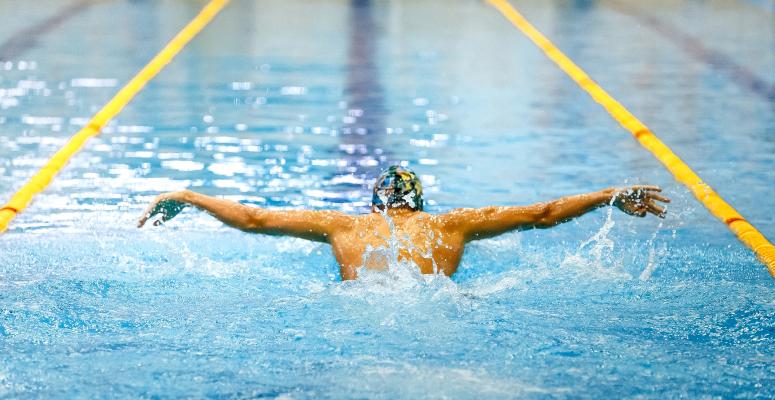
Swimmers can swim miles in just a single training session. They depend on the strength of their shoulders to cover ground. Unfortunately, up to 91% of competitive swimmers experience shoulder pain during or after training sessions. Since it is so common for swimmers to experience shoulder pain, their condition is often referred to as “swimmer’s shoulder.”
Competitive swimmers are at a higher risk of shoulder injury due to the intense loads of pressure they place on their shoulder tendons, bones and muscles in order to propel them in the water. Overuse or repetitive movement can cause the tendons in their shoulder to swell, leading them to catch on their upper shoulder bone. As a result, swimmer’s shoulder is also called shoulder impingement, which specifically refers to inflammation of the rotator cuff, or group of tendons and muscles around the shoulder joint.
When there’s constant friction in their shoulder blades and prolonged pressure to their tendons, swimmers can experience:
- Swelling.
- Constant shoulder pain.
- Pain that gets worse at night.
- Tenderness at the site of injury.
- Shoulder weakness.
If left untreated, swimmer’s shoulder can lead to the development of scar tissue. This can further limit mobility. In addition, swimmer’s shoulder can progress into a rotator cuff tear in which the tendon may tear partially or completely.
These symptoms are hallmarks of swimmer’s shoulder and can interrupt a swimmer’s performance both in and out of the water. Thankfully, treatments like physical therapy can help swimmers regain their mobility and learn how to swim with a lower risk of developing swimmer’s shoulder.
Do you have to be a swimmer to develop swimmer’s shoulder?
While swimmers often develop swimmer’s shoulder due to overuse, you don’t have to be a swimmer to get swimmer’s shoulder symptoms. Anyone who uses their shoulders to repeatedly lift or reach overhead can develop the condition. Baseball players, construction workers and electricians are prone to shoulder tendon pain.
How can PT benefit someone with swimmer’s shoulder?
Physical therapists are well versed in athletic injuries like swimmer’s shoulder and shoulder impingement. During physical therapy treatment, gentle exercises can help you rebuild strength and range of motion. During a treatment, your physical therapist may:
- Suggest rest — Rest is very important when it comes to treating swimmer’s shoulder. You should avoid strenuous exercise or any movements that make your pain worse.
- Have you stretch your shoulder — While you should rest your shoulder, you should also make sure you use enough healthy movement to make progress. Range-of-motion exercises and stretches can help improve your mobility.
- Perform hands-on manual therapy — Your muscles and tendons tighten after an injury, especially when there’s swelling. A physical therapist can press on myofascial trigger points to help release built-up tension and inflammation. Dry needling is a technique that focuses on these trigger points to reduce tension.
- Teach you alternative athletic practices — Shoulder impingement is often linked to overexertion and overtraining. Physical therapists can teach you how to take productive breaks and maintain an effective stretching routine to protect your tendons from further injury. Your physical therapist may also give you some exercises that you can do at home, which may help you recover faster.
- Introduce you to diverse therapies — Some environments and technologies can help you stretch your injured shoulder and improve its circulation. Aquatic therapy, for example, can help you move your injured shoulder in a gentle environment.
- Strengthen tissue around your shoulder — Your physical therapist may focus on strengthening the tissue around your injury in order to improve the function of your shoulder. These can help reduce your chance of further injury.
Alliance PTP is ready to help you find top-notch PT for swimmer’s shoulder
Are you tired of pushing through your pain while swimming, working or engaging in your daily routine? At Alliance Physical Therapy Partners, we’re proudly bringing together physical therapy practices across the country to help people get the high-quality PT they need. Want to see a physical therapist in person? We can put you in touch with an Alliance PTP partner that’s close to you and that can help you address your swimmer’s shoulder.
Not keen on in-person PT sessions or not close to an Alliance PTP partner? No worries. We also offer effective and affordable virtual physical therapy through our Agile Virtual Physical Therapy platform.
Come find the physical therapist who can help treat your swimmer’s shoulder injury.
Get Help at a Location Near You
